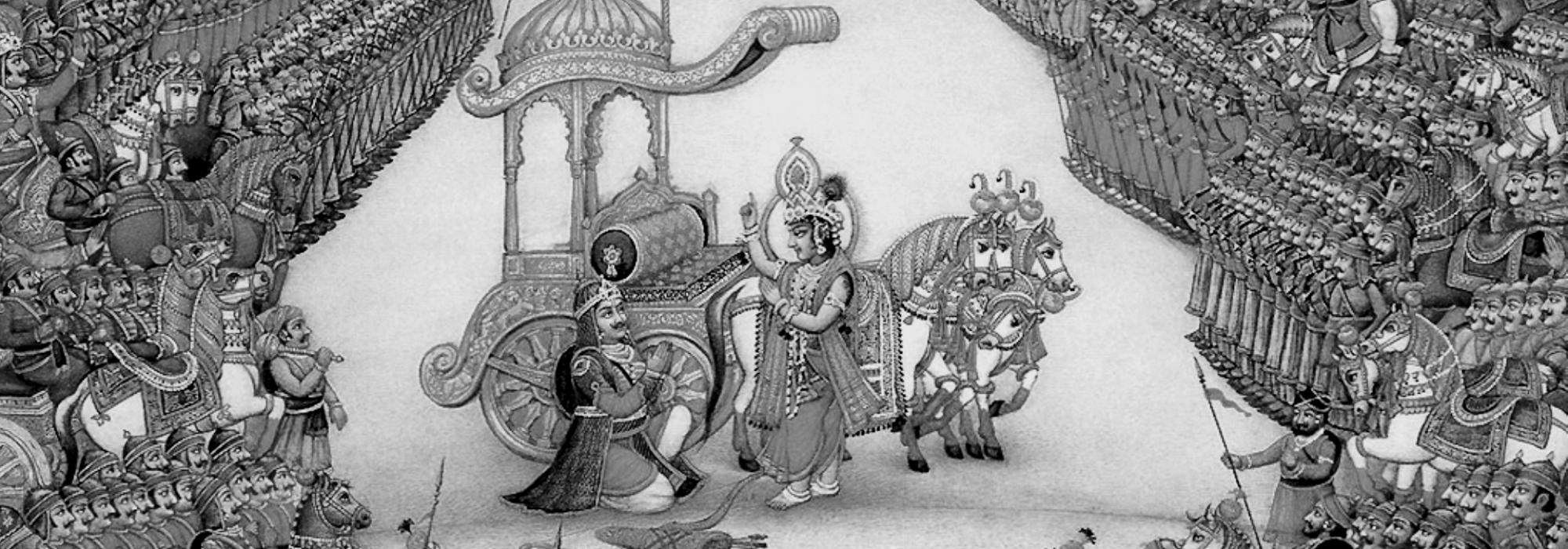In 1962, the Marxist historian D D Kosambi published a work titled Myth and Reality: Studies in the Formation of Indian Culture (hereafter referred to as 'M&R'). The first part of the book is called ‘Social and Economic Aspects of the Bhagavad-Gita’ and deals with the philosophical, ethical, and historical aspects of the Gita. Not only are most of his arguments baseless, they also reek of a deeper intellectual dishonesty, which possibly stems from an ulterior motive of trying to malign one of the most comprehensive summaries of Hinduism, the oldest living tradition in the world. Over the course of this article series, we will consider the eight fundamental contentions of Kosambi and then go ahead to show how they are founded in either falsehood or ignorance or both.
One of the earliest arguments that Kosambi makes is that since the language of the Gita is flexible and can be variously interpreted, it has no validity as a text. He says (emphasis is mine) –
The Gita has attracted minds of bents entirely different from each other and from that of Arjuna. Each has interpreted the supposedly divine words so differently from all the others that the original seems far more suited to raise doubts and to split a personality than to heal an inner division. Any moral philosophy which managed to receive so many variant interpretations from minds developed in widely different types of society must be highly equivocal. No question remains of its basic validity if the meaning be so flexible.
– M&R, p. 17
Just because different people view the same thing in different ways doesn’t imply that the subject under consideration is flawed. In the case of the Gita, the very fact that so many people have interpreted it in subtly different ways over time indicates that they have all found the text rather interesting. They have found it worthwhile to spend their time and understand the text in their own way. Further, the interpretation of a text doesn’t happen in a vacuum – there is a tradition of interpretation and anyone who has written a classical commentary adheres to the tradition. This is different from the commentary of someone like Gandhi, who interpreted the Gita based on his own whims without a strong grounding in the traditional commentaries (or in Hinduism, for that matter).
The Gita is considered as one of the प्रस्थान-त्रयी (three fundamental texts) according to the Vedanta school of philosophy. It is a synthesis of the best teaching from the various foundational works of Hinduism, starting from the Vedas and Upanishads all the way to the various smrtis and the different schools of Indian philosophy. And even among the traditional commentators of the Gita, there are only about 10-12 verses that have been differently interpreted, while there is concurrence with respect to all the other verses. In other words, more than 98% of the Gita was understood in the same way by the traditional commentators.
As for the modern commentators, those who have an understanding of Hinduism’s foundational works have also said more or less the same things, though their focuses are diverse. Even in the various translations of the Gita, there are only about 20 verses (out of 700) that have been given different shades of meaning depending on the bias of the translators. Rest of the verses are pretty much straightforward. As for the Gita itself, it doesn’t propagate any dogma or ideology.
At any rate, expecting everyone to understand a given topic in an identical manner is impossible. Even a topic in the physical sciences, such as the nature of light, is understood and interpreted differently. (Just because light can be seen as both a particle and a wave, do we say that light itself is suspect and therefore should be trashed? That is precisely what Kosambi is suggesting – just because the Gita is variously interpreted, it is meaningless!) What then to say of religious texts? It is ironic that over the years, even Communism/Marxism has been subject to a lot of interpretation. Would a full-blooded Marxist like Kosambi be self-aware enough to apply the same argument to texts of Marxism?
Although the different schools of philosophy interpreted the Gita according to their bias, the text of the Gita remained untouched and also, the disciples of the various schools didn’t kill each other because they didn’t agree with one another. This is a common problem with the Semitic faiths as well as with Communism/Marxism. And yet Hindus in general have never had a problem when a Jesus or a Mohammed or a Marx or a Kosambi is venerated. Hinduism is perhaps the only consistently tolerant faith in human history.
The fundamental intention of the Gita is to heal an inner division and the Mahabharata bears testimony to the fact that the wartime counsel was successful.
In writing this article series, I have drawn extensively from my discussions with Shatavadhani Dr. R Ganesh and Dr. Koti Sreekrishna. I am extremely grateful for their perceptive and detailed pre-publication reviews.















































